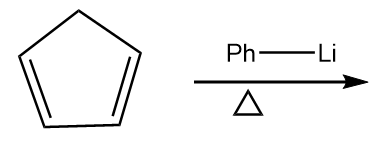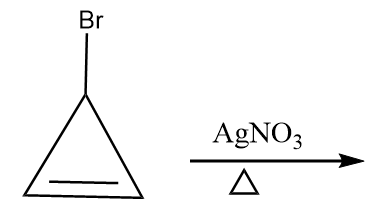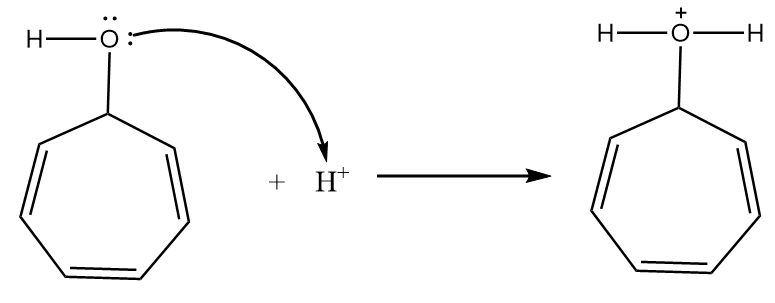Question
Question: In which of the following reactions, the product is aromatic? A.
B.
C.
D. All of these
Solution
Hint : Aromatic compound is identified from Huckel’s rule of aromaticity which states that for a compound to be aromatic, it must be a cyclic compound and all the carbon atoms present in the ring must be sp2 hybridized i.e., the ring must be planar and the ring should consist of a conjugation of (4n+2)π electrons, where n is known as index of aromaticity and the value of n=0,1, 2, 3, ... .
Complete Step By Step Answer:
Let us look at each given reaction separately.
Reaction given in (A):
Step-1: The lone pair of electrons attract the hydrogen ion. The reaction proceeds as follows:

Step-2: When the compound is heated, then the removal of water molecule takes place and respective carbocation is formed. The reaction proceeds as follows:

The compound formed is tropylium ion and it has following properties:
- It is a cyclic compound
- Ring is planar i.e.; all carbon atoms are sp2 hybridized
- The index of aromaticity for the compound i.e., 4n+2=6
⇒n=1
So, the ion formed after the reaction is an aromatic compound.
Reaction given in (B):
As the organolithium reagent which is used in the reaction is a very good base, so it extracts the acidic hydrogen in the presence of heat and respective carbanion is formed. The reaction proceeds as follows:

The compound formed is cyclopentadienyl anion and it has following properties:
- It is a cyclic compound
- Ring is planar i.e.; all carbon atoms are sp2 hybridized
- The index of aromaticity for the compound i.e., 4n+2=6
⇒n=1
So, the ion formed after the reaction is an aromatic compound.
Reaction given in (C):
When a compound containing halide ion is heated in the presence of AgNO3 , then the formation of respective carbocation takes place along with the removal of silver halide as a precipitate. The given reaction proceeds as follows:

The compound formed is cyclopropyl cation and it has following properties:
- It is a cyclic compound
- Ring is planar i.e.; all carbon atoms are sp2 hybridized
- The index of aromaticity for the compound i.e., 4n+2=2
⇒n=0
So, the ion formed after the reaction is an aromatic compound.
Thus, in all the given reactions an aromatic compound is formed as a product.
So, option (D) is the correct answer.
Note :
It is important to note that a compound with planar cyclic structure but consisting of a 4nπ electron system is known as an antiaromatic compound whereas non-planar cyclic compounds are termed as non-aromatic compounds.
